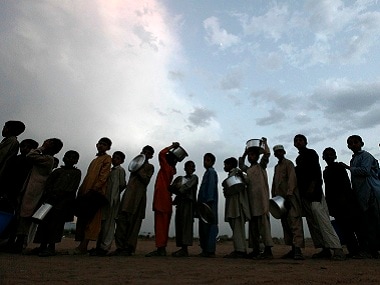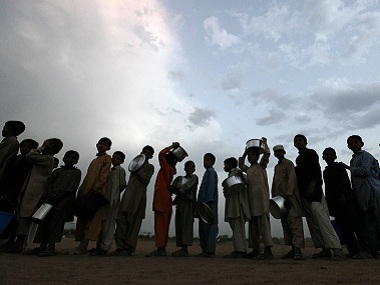The southern port city of Karachi was chosen as the capital of the newly created country of Pakistan, which won independence from the British in 1947. However, a decade later, when President Ayub Khan declared martial law in 1958, he also decided to move the capital city away from Karachi. To this end, he decided on the establishment of a new capital city, Islamabad, nearly 1,500 kilometres away to the north. The reasoning behind this move was political and never clearly established, but it’s believed that Ayub wanted the capital city to remain close to Rawalpindi, where the military headquarters were located. As mentioned in an article on Huffington Post, Ayub may have also been wary of the threat posed by Rawalpindi’s military generals, that they might stage another coup d’etat while he himself was attending to administrative matters in distant Karachi. In addition to the establishment of a new city, the original plan also called for the creation of a new province: Islamabad Capital Territory (ICT). Accordingly, land was transferred from the neighbouring district of Rawalpindi in Punjab province to the ICT, although the city of Rawalpindi was eventually kept out. Demographics Today, the Islamabad Capital Territory is the smallest province of Pakistan, both in terms of size and population.
As per the 2017 census, there were 3,35,408 households in ICT, making a total population of 20,01,579. This was a significant increase over the region’s population from 1998, when there were just 8,05,235 persons, and from 1981 when there were 3,40,286 persons. [caption id=“attachment_4764421” align=“alignleft” width=“380”]
 Islamabad faces a crippling water shortage problem. Reuters[/caption] It’s also the smallest area by size, measuring just 906 square kilometres. However, having over two million people in such a small area by size gives ICT a population density of over 1,000 persons per square kilometres, which is by far the most densely populated of Pakistan’s seven administrative divisions. However, with many of the country’s political elite living in Islamabad, the province is more affluent and well-heeled. This is also reflected in its literacy and life expectancy. As per the Pakistan Bureau of Statistics,
www.pbs.gov.pk, Islamabad had a literacy rate of 85 percent, the highest in the country, and far more than the national average of 58 percent. Of them, 7,30,000 are eligible to vote in the 26 July elections,
as reported by Pakistan Observer earlier this year. Key issues Being the smallest division means ICT has just three constituencies. Being a relatively new district with a planned layout and political structure, there are also fewer problems afflicting Islamabad Capital Territory as compared to the others. However, as the Huffington Post article pointed out, years of complacency and misrule, in addition to focus on things that were perhaps not as important, have left the city with myriad problems. The Capital Development Authority (CDA), in charge of the city’s civic administration, spent huge sums of money on beautifying the city and building freeways. In doing so, however, it has robbed the ICT of its green cover, while the public mass transit system is woefully inadequate. In addition, there’s also a critical shortage of water in the region. The affluent neighbourhoods manage to make do by having water tankers deliver water to their doorsteps every day albeit at exorbitant prices. On the other hand, those who cannot afford to have tankers, dig wells illegally to draw from groundwater, the report added. However, a key issue this year will be delimitation of constituencies, an exercise that was carried out following the Election Act 2017, which said the changing demographics of Pakistan’s different provinces would have to be acknowledged while defining electoral maps. Accordingly, Islamabad Capital Territory, which used to have two constituencies, will now have three. These have been identified as NA-52, NA-53, and NA-54, the Pakistan Observer report added. Of these, NA-52 and NA-53 have been carved out of the erstwhile NA-49 constituency, and include the regions of Rawat, Pind Bhagwal, Chatta Bakhtawar, Chak Shehzad, Morha Noor, etc. NA-54, on the other hand, includes mostly the urban areas of F-8, F-10 and Golra Sharif, the report added. Sitting legislators The 2018 elections will be the first time three legislators would be representing ICT. In previous elections, there were just two. Being a more cosmopolitan city with a diverse population, the politics of Islamabad are also not shaped by the regional aspirations of the parties. With people from all across Pakistan making Islamabad their home, the PML-N, PPP, and PTI are all equally strong. The two sitting legislators include one each from the PML-N and PTI, while PPP candidates didn’t fare too badly either. The NA-49 seat has gone the way of the PML-N in the last two elections, in 2008 and in 2013, as the party’s candidate Tariq Fazal Chaudhry kept up his winning streak. On 26 July, Chaudhry will look to make it a hat-trick of wins. As mentioned in
a report on The Tribune, the NA-49 used to be a mostly rural section of the capital city, and Chaudhry won it by a slender margin of just 756 votes over the PPP’s Nayyer Hussain Bukhari. Five years later, Chaudhry won it again, but this time with a far more comfortable margin of nearly 40,000 votes more than his nearest rival. What’s also interesting is the gains made by the PTI. Imran Khan’s party had traditionally been strong in the northern mountains, but by 2013, it had begun making inroads into Islamabad as well. The PTI candidate Chaudhry Ilyas Meherban won over 57,000 votes to pip PPP to the second spot, a huge achievement considering the party was nowhere on the political arena until five years prior to that. But even more impressive was the party’s performance in the capital’s other seat, NA-48, where PTI’s Makhdoom Javed Hashmi claimed a surprising victory. The Tribune reported that the party’s ‘Naya Pakistan’ campaign was enthusiastically cheered on by youth and women’s participation in the predominantly urban constituency to claim a famous win over the incumbent, PML-N’s Anjum Aqeel Khan.
Islamabad Capital Territory is the smallest province of Pakistan, both in terms of size and population. It’s also a new district with planned layout and political structure, meaning fewer problems than other provinces
Advertisement
End of Article


)

)
)
)
)
)
)
)
)



